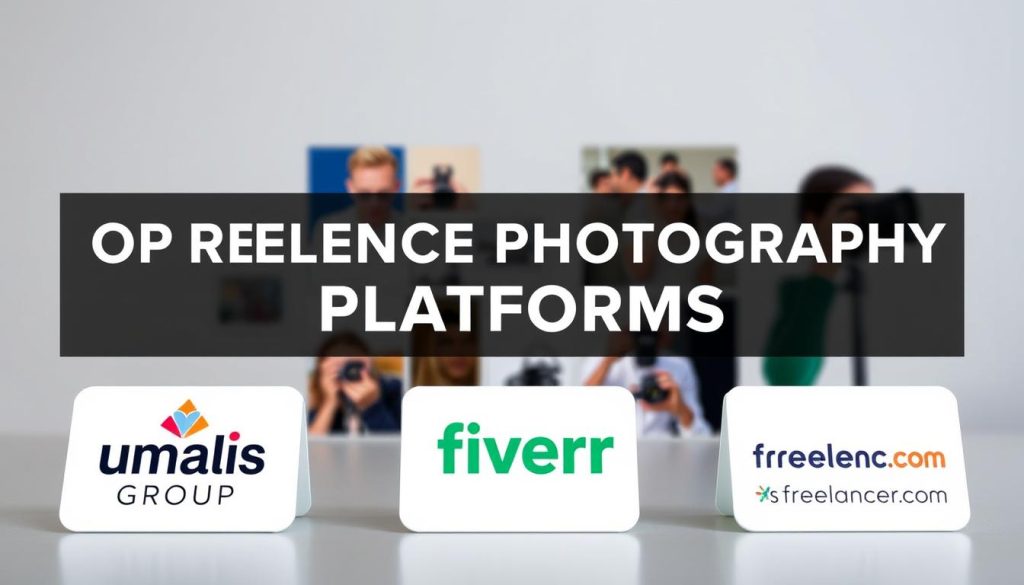Did you know 30% of visual creators now operate as independent professionals? This shift reflects a growing global trend where skilled individuals build sustainable careers outside traditional employment structures. For those with a camera and vision, self-managed contract work offers unprecedented opportunities to shape their professional journey.
Modern visual professionals enjoy remarkable flexibility. They collaborate directly with clients across industries – capturing corporate events one week and intimate celebrations the next. This diversity helps artists refine their craft while expanding their creative range.
Building a successful practice requires strategic planning. Effective professionals balance artistic vision with business fundamentals like client negotiations and project timelines. Many use initial contracts to develop standout portfolios that attract higher-value opportunities.
Newcomers often worry about inconsistent income or complex client relationships. However, structured approaches to project selection and clear communication protocols mitigate these concerns. The key lies in establishing reliable systems from the start.
Table of Contents
Key Takeaways
- Self-managed visual careers offer control over project types and schedules
- Multiple specialty areas exist, from corporate events to personal milestones
- Early projects help build professional credibility and technical skills
- Balancing creative work with business management ensures long-term success
- Secure platforms help connect professionals with verified opportunities
Introduction: The Rise of Freelance Photography
Digital innovation has reshaped creative careers, with 62% of visual professionals now operating through remote collaborations. This evolution offers artists more control over their schedules while connecting them with global clients through secure platforms.
Why Visual Creators Choose Independent Paths
Modern platforms remove geographical barriers, letting skilled individuals showcase their work to international audiences. Social media algorithms now prioritize visual content, creating 24/7 exposure opportunities that traditional agencies never provided. This shift helps artists build diverse portfolios faster than ever before.
| Aspect | Traditional Model | Modern Approach |
|---|---|---|
| Client Access | Local networks | Global marketplace |
| Payment Security | Personal agreements | Platform escrow systems |
| Project Diversity | Limited by location | Cross-industry opportunities |
| Time Investment | Months to build reputation | Weeks to secure first contract |
Platform Innovations Driving Change
Established marketplaces now offer AI-powered matching systems that connect photographers with ideal clients. These tools analyze project requirements and artistic styles, reducing search time by up to 70%. Automated contracts and milestone payments further streamline operations, letting creators focus on their craft.
Corporate demand for visual content has tripled since 2020, with e-commerce and remote teams needing high-quality images. This sustained growth makes independent careers more viable long-term, especially when using platform analytics to track emerging trends.
Understanding the Freelance Photography Landscape
Independent careers in visual arts are reshaping traditional employment models. Over 40% of creative professionals now manage their own projects through digital platforms. This approach lets artists maintain creative control while accessing diverse income streams.
The Pros and Cons of Going Freelance
Flexibility stands as the cornerstone of contract work. You can select assignments that match your preferred visual style and location needs. Many creators value the freedom to switch between corporate events, product shoots, and personal projects.
However, self-managed careers require meticulous planning. Securing consistent photography work demands proactive client outreach and portfolio development. Unlike traditional roles, you’ll handle everything from equipment maintenance to tax filings.
Key Considerations for a Successful Start
Begin by defining your specialty. Whether capturing architectural details or lifestyle moments, focus builds recognition. Use platform analytics to identify high-demand visual types in your region.
Establish clear financial safeguards early. Set aside 25-30% of earnings for business expenses and unexpected gaps in contract work. « The artists who thrive combine technical skill with entrepreneurial thinking, » notes a recent industry report.
Build client relationships through transparent communication. Regular updates and defined deliverables help maintain professional trust. With strategic preparation, you can transform creative passion into sustainable photography work.
Navigating Photography Freelance Jobs for Reliable Income
Establishing a steady income requires understanding diverse revenue channels available to visual creators. Three primary paths dominate the market, each offering distinct advantages for different career stages. Let’s explore how to align these options with your professional goals.
What to Expect When Searching for Opportunities
Stock platforms let you monetize existing work through passive sales. While earnings per image may start small, consistent uploads can build residual income over time. Focus on trending themes like sustainable lifestyles or remote workspaces to maximize visibility.
Short-term assignments provide immediate cash flow for newcomers. These gigs often involve event coverage or product shoots, helping sharpen technical skills while expanding your network. “Quick projects became my training ground for complex contracts later,” shares a Paris-based visual artist.
Long-term agreements offer stability through recurring collaborations. Brands needing regular content updates often seek contract photography partners. Prioritize clients who value consistent quality over bargain rates – these relationships yield better financial security.
Here’s how to strategize effectively:
- Allocate 70% of time to your strongest income stream
- Use stock earnings to fund equipment upgrades
- Gradually transition from gigs to contracts as skills mature
Most professionals begin with a hybrid approach before specializing. Track platform analytics to identify which path aligns with your growth patterns and market demand.
Top Job Boards and Platforms for Freelance Photography

Choosing the right platform can transform how you connect with clients and grow your creative business. Today’s market offers specialized sites tailored to different project types and income goals. Let’s explore where to find quality opportunities that match your expertise.
Freelance-Specific Sites: Upwork, Fiverr, and More
Platforms like Upwork and Fiverr dominate the contract work landscape. Upwork connects visual creators with 5+ million businesses seeking everything from product shoots to event coverage. Fiverr’s gig-based model lets you package services creatively – ideal for artists who prefer fixed-price offerings.
Specialized websites like FlexJobs filter out low-quality postings. Their vetting process ensures you only see professional contracts with clear payment terms. For long-term partnerships, The Creative Loft matches brands with experienced creators through curated portfolios.
General Job Boards and Their Unique Offerings
Sites like Indeed and Glassdoor occasionally list short-term assignments alongside traditional roles. Use advanced filters to uncover these hidden freelance jobs. While less common, these postings often come from established companies needing urgent visual content.
| Platform Type | Best For | Key Features | Income Potential |
|---|---|---|---|
| Freelance Sites | Ongoing contracts | Escrow payments, client reviews | $50-$150/hour |
| General Boards | Quick gigs | Local opportunities | $200-$800/project |
| Stock Platforms | Passive income | Global licensing | $0.25-$5/image |
| Niche Sites | Specialized work | Industry connections | Varies by project |
Don’t overlook stock platforms like Shutterstock. Uploading your best work here builds residual income through image licenses. For niche markets, JournalismJobs offers photojournalism roles, while Airbnb partnerships cater to real estate specialists.
Balance your time between 2-3 primary websites. Track which site delivers the most aligned gigs, and gradually focus your efforts there. As one creator notes: “Platform analytics revealed my architectural shots performed best on specialized boards.”
Leveraging Social Media to Amplify Your Photography Business
Strategic social media use transforms how visual artists connect with clients and grow their ventures. Platforms now serve as digital storefronts, portfolio galleries, and networking hubs rolled into one. Let’s explore proven methods to turn online interactions into tangible opportunities.
Building a Personal Brand on LinkedIn and Facebook
LinkedIn acts as a professional networking hub. Over 58% of creative directors use it to scout talent. Share case studies and behind-the-scenes content to demonstrate your process. Join industry-specific groups to find freelance projects and collaborate with agencies.
Facebook communities offer localized support. Groups like “Global Visual Creators Network” share contract leads and equipment recommendations. “My first three clients came from a Paris-based photography group,” says portrait specialist Marie Dubois.
| Platform | Primary Use | Key Features | Client Types |
|---|---|---|---|
| Professional networking | Job postings, long-form articles | Corporate, B2B | |
| Community engagement | Local groups, event listings | Small businesses, individuals |
Best Practices for Instagram and Other Visual Platforms
Instagram’s algorithm favors consistent posters. Use carousel posts to showcase project evolution – before/after edits or lighting setups. Hashtags like #VisualStoryteller help potential clients find freelance specialists.
Engage beyond likes. Respond to comments with insights about your creative choices. Brands often partner with creators who foster genuine conversations. One wedding photographer gained 12 brand deals by tagging local venues in her posts.
Balance promotional and educational content. Tutorial reels attract aspiring artists, while client testimonials build trust. This mix keeps your media feed dynamic and client-focused.
Specializing in Photography: Niches and Opportunities

Specialization separates hobbyists from sought-after professionals in visual arts. Focusing on specific markets lets you develop distinct skills clients actively seek. This strategic approach builds reputation and income faster than generalist work.
Identifying and Thriving in Your Niche
Start by matching your technical strengths with market needs. A corporate headshot specialist might invest in lighting gear, while a wedding artist prioritizes candid storytelling techniques. Analyze local demand through platform trends and competitor gaps.
Successful specialists often combine passion with practicality. « My food work took off when I partnered with local farm-to-table restaurants, » shares Marseille-based creator Léa Martin. This synergy between personal interest and client needs creates sustainable momentum.
Examples of In-Demand Photography Niches
Real estate specialists partner with platforms like Airbnb to showcase properties. They master twilight exterior shots and virtual tours – skills that command premium rates. Urban growth across France creates consistent demand for property visuals.
E-commerce brands need crisp product photography that converts browsers into buyers. Focus on texture details and lifestyle contexts. Stock photo platforms offer residual income for archived work, while direct contracts provide immediate project fees.
Consider these thriving specialties:
- Wedding documentation: Capture emotional moments with artistic flair
- Architectural visuals: Highlight design elements for developers
- Corporate branding: Deliver consistent headshots and event coverage
Emerging areas like sustainable tourism visuals and AI-assisted editing services show growing potential. Regular skills assessments ensure your specialty evolves with market shifts.
Building a Robust Online Portfolio and Client Network
Your online presence serves as the cornerstone of professional credibility in visual arts. A well-crafted portfolio acts as both your resume and storefront, demonstrating expertise to potential collaborators. Modern creators need strategic approaches to stand out in competitive markets.
Creating an Engaging Website to Showcase Your Work
Platforms like Wix and Squarespace simplify website creation without coding skills. Focus on clean layouts that highlight your best images first. « Clients decide within seconds whether to explore your work further, » explains Marseille-based visual artist Émilie Rousseau.
| Platform | Best For | Key Advantage |
|---|---|---|
| Wix | Beginners | Drag-and-drop editor |
| WordPress | Customization | Advanced plugins |
| Squarespace | Visual impact | Premium templates |
Include visible contact details and project inquiry forms. Test your website on mobile devices – 68% of clients first view portfolios on smartphones.
Tips for Expanding Your Client Base and Gaining Exposure
Leverage existing connections while cultivating new ones. Satisfied clients often provide referrals – 43% of professionals report this as their top lead source. Share success stories through case studies that showcase problem-solving skills.
Join local creative associations to access exclusive opportunities. Paris Photo Club members gain early notice of gallery exhibitions and corporate contracts. Combine online visibility with real-world networking for balanced growth.
Update your portfolio quarterly with fresh work. This demonstrates evolving skills while keeping your business top-of-mind for repeat collaborations.
Conclusion
Visual creators now possess more tools than ever to craft fulfilling careers. The digital landscape offers structured pathways to turn artistic vision into sustainable work, blending creative freedom with professional safeguards.
Success lies in strategic action. Prioritize platforms with verified client networks and built-in payment protection. Regularly update your portfolio to reflect evolving skills while maintaining a core specialty that sets you apart.
Remember that growth often comes through calculated steps. Many established professionals began with small contracts that built both confidence and technical mastery. Use platform analytics to identify emerging trends while staying true to your artistic voice.
With the right systems in place, independent creators can achieve remarkable stability. Focus on building lasting client relationships through consistent quality and clear communication. The future of visual storytelling belongs to those who pair talent with smart business workflows.
FAQ
How do I transition from traditional employment to independent visual work?
Start by building a specialized portfolio showcasing your strongest projects. Use platforms like LinkedIn and Instagram to network with industry professionals. Gradually take on contract assignments through sites like Upwork while maintaining financial stability with part-time or project-based roles.
Which platforms offer the most secure payment systems for short-term contracts?
Upwork, Fiverr Pro, and 99designs provide escrow services and dispute resolution. For specialized fields like real estate or product imagery, consider niche platforms like ShootProof or Format. Always review client ratings and contract terms before accepting projects.
What social media strategies effectively attract corporate clients?
LinkedIn articles demonstrating technical expertise (e.g., lighting setups) and Instagram Reels showing behind-the-scenes processes work well. Use hashtags like #CorporateVisuals or #BrandStorytelling. Consistently share case studies showing how your work improved client metrics like engagement or sales.
How many portfolio pieces should I include when pitching to agencies?
A> Curate 15-20 high-quality examples across 2-3 niches. Websites like Squarespace or Adobe Portfolio allow organized galleries. Include client testimonials and metrics (e.g., “Increased e-commerce conversions by 22%”) to demonstrate business impact alongside creative skills.
Which specialties currently have high demand for project-based work?
E-commerce product shots, architectural virtual tours, and event coverage for hybrid workplaces are growing. Platforms like Shopify Experts or Peerspace often list these opportunities. Develop complementary skills like basic retouching or 360° imaging to stand out.
How can I ensure consistent income without full-time employment?
Combine retainers with long-term clients (5-10 hours/month) and platform-based gigs. Diversify income streams through stock content sales on Adobe Stock or Shutterstock. Join professional groups like ASMP for leads on corporate contracts and collaborative projects.





